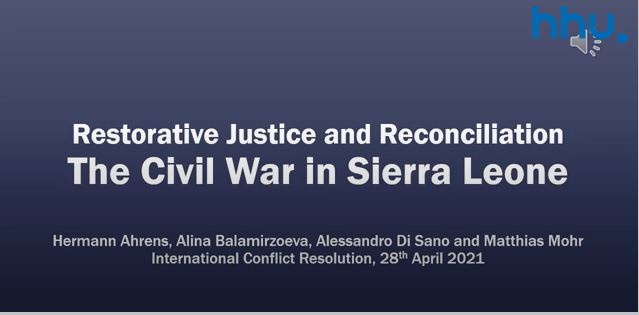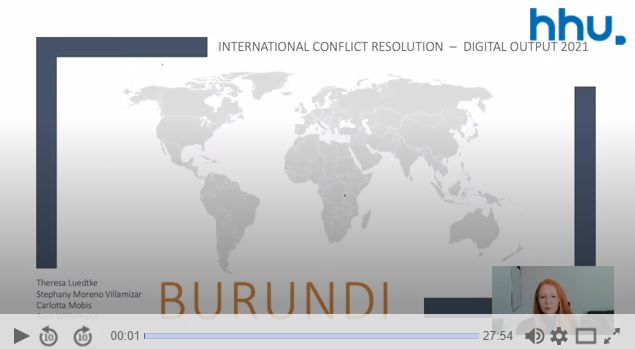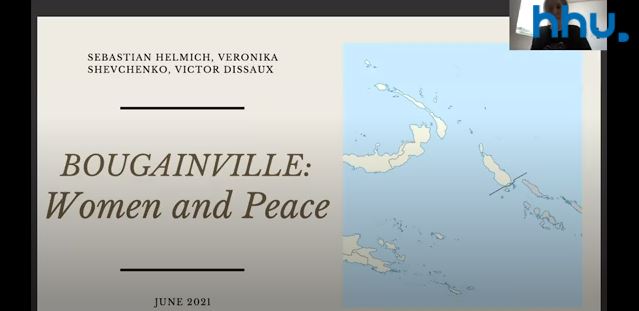
Sierra Leone: Restorative Justice and Reconciliation
The digital output about the conflict in Sierra Leone looks at civil war between 1991 and 2002, the negotiated peace agreements and the post-conflict challenges today. The students focus on the four phases of reconciliation and the special court for Sierra Leone addressing human rights abuses and serious crimes during conflict.

Colombia: Negotiation and Mediation
Who are the major actors and what peace agreements have been discussed in the past? The student taskforce explains the specific role of mediators such as Cuba and Norway in the run-up to the signing of the peace agreement in 2016.

Burundi: Power-sharing and Peacebuilding
The digital output gives an overview of the civil war in Burundi between 1993 and 2005. The students introduce the Arusha Agreement and elaborate on the challenges the adversaries as well as mediators faced during that process. Based on an outlook on the postconflict situation today, the taskforce discusses to what extent the peace process can be considered a success.

Northern Ireland: Sectarianism
What is the conflict in Northern Ireland all about? What have been the main causes and what have been the possible solutions for the conflict? Considering the much-heralded Good Friday Agreement in 1998, the students discuss the implications for conflict resolution in general. How is peace and stability possible against the backdrop of sectarianism in everyday lives?

To understand the tensions between Tibet and China, the student group goes back to the roots of the conflict and explains the respective interests on both sides. Yet another aspect of the digital output is the role of nonviolent methods and the role of external actors. A comparative look into the dynamics in nowadays Hongkong concludes the presentation.

The student taskforce introduces the Bougainville conflict, the historical background, and the peace negotiation process culminating in the referendum in 2019. A major focus of the digital output is the role of women contributing to the peaceful and nonviolent conflict resolution process during the last two decades.

The student group introduces the major conflict issues and stakeholders of the crisis in Eastern Ukraine since 2014. Juxtaposing the different interests of the variety of internal and external stakeholders, the limitations of the Minsk Protocol are demonstrated.